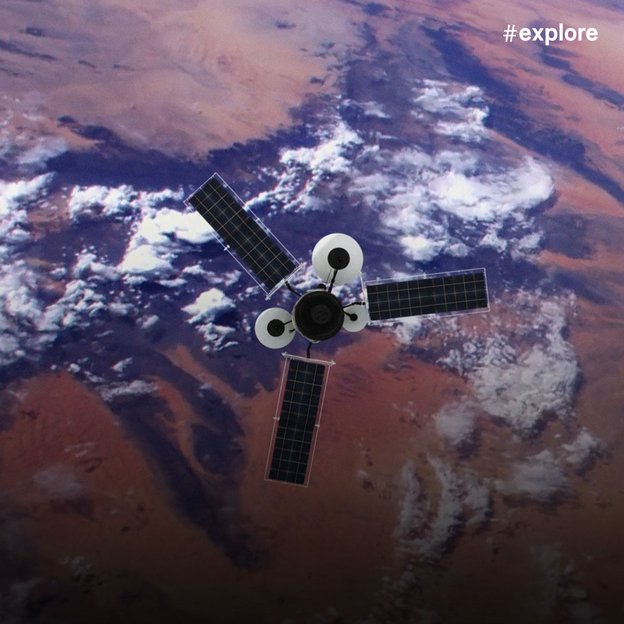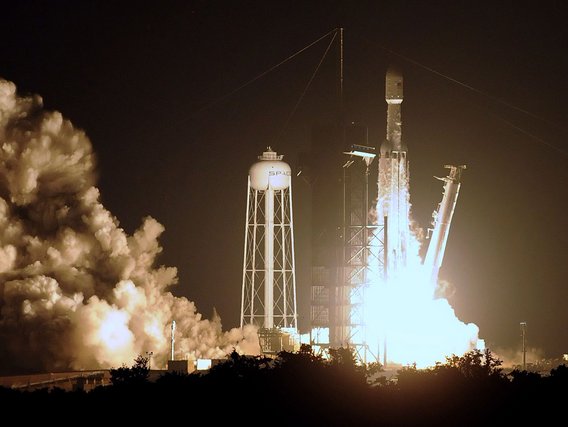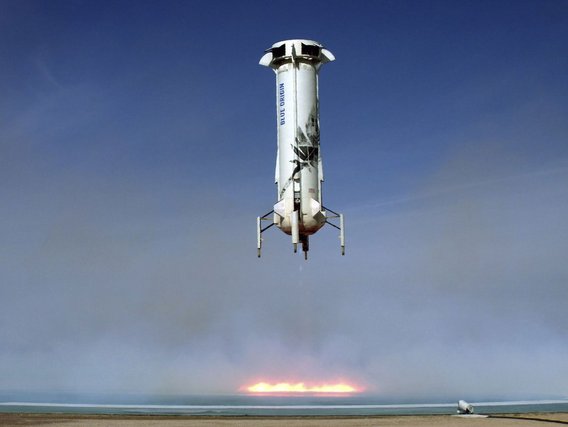Space travel
Who is doing what in space?
With Europe, China, Japan, and India, many countries have set their sights on space. Find out which companies are operating in orbit on #explore.

Space travel
With Europe, China, Japan, and India, many countries have set their sights on space. Find out which companies are operating in orbit on #explore.

16 July 2020
Many decades have passed since NASA and Roskosmos last enjoyed a duopoly in space. Other players in the form of Europe, China, Japan and India have also long been pursuing their own space projects. And, in addition to state-run space agencies, ever larger numbers of private companies are also launching rockets and satellites into space. We present an overview.
Major space travel hub in Cape Canaveral: The whole world was able to watch live as astronauts Doug Henley and Bob Behnken were blasted into space on board a “Falcon 9” rocket on 31 May. 19 hours later, the “Crew Dragon” capsule from private aerospace company SpaceX docked safely with the International Space Station, ISS - making space travel history in a number of ways as it did so. The trip marked the first time astronauts had ever flown into space in a privately-owned rocket and capsule. It was also the first time a manned private space capsule had ever docked with the ISS.
The “Demo-2” mission ushered in a new age of commercial manned space travel - for both NASA and SpaceX. The intention is to reuse the rocket and space capsule for future NASA missions to the ISS. The advantage for the space agency is that, after many years of having to hitch a ride on Russian rockets, it can now launch the SpaceX rocket from its very own space hub. After the end of the space shuttle programme in 2011, the only way for NASA astronauts to get into space was in Soyuz capsules.

For SpaceX founder Elon Musk, the ISS mission was a significant milestone in his interplanetary travel plan to take human beings to Mars and beyond. In 2012 - ten years after the company was launched - SpaceX managed for the first time to dock an unmanned space capsule with the ISS. Musk was consequently showered with NASA contracts worth billions of dollars and beat the competition to become the main transportation service provider to the space station. In 2017, SpaceX launched a reusable propulsion rocket. According to Musk, the developers had spent 15 years working on creating reusable propulsion rockets with the aim of significantly reducing the costs of space missions.
With „Falcon Heavy“, the company is currently operating the most powerful launch vehicle in the world. With this rocket, SpaceX is seeking to get itself into a prime position for major US military contracts. In the meantime, however, Musk has backed away from his original plan to use this giant rocket to take astronauts to Mars. The envisaged missions to the Red Planet have since been linked to a new system which goes by the name of “Starship” and “Super Heavy”. The role of “Falcon Heavy” will be to carry large satellites like the 6,500 kilo “Arabsat 6A” into orbit, and it could also play a key role in a future mission to the Moon.
SpaceX is using the cheaper “Falcon 9” to carry smaller satellites into orbit. Since 2019, it has also been pursuing its own independent aims: the company has now launched 598 of its Starlink satellites, with 478 of the launches taking place this year alone. The idea is to supply fast satellite broadband cover to North America; the commercial launch is scheduled to take place before the end of this year. It is anticipated that these satellites will start to beam the Internet all over the world from space next year.
Unlike traditional TV satellites, the Starlink satellites do not orbit the Earth as lone wolves at an altitude of more than 35,000 kilometres. Instead, they fly in clusters of many satellites in a low orbit of 550 kilometres. In higher orbits, user data packets would take too long to reach their destination, turning Internet telephony or online games into highly clunky affairs.
The low-Earth orbit should also minimise the occurrence of space debris. According to the company, satellites which can no longer be manoeuvred will be knocked out of orbit by natural effects such as gravity and atmospheric particles and burn up in the atmosphere within five years.
Musk aims to have 11,927 satellites in space by 2027. Orders for another 30,000 have already been placed. Since “Sputnik” in 1957, it is estimated that humankind has launched some 8,500 satellites into orbit – so SpaceX would be seeking to operate almost five times as many again. These global plans are leading astronomers to sound the alarm. Researchers fear that the swarms of satellites will severely impair their ability to observe the skies. Moreover, the signals might interfere with radio-astronomical observations.
SpaceX has promised to equip all new satellites with solar visors and to change the angle of their solar panels . This should help reduce the brightness of these tiny artificial moons against the night sky. Musk also intends to dispense with the originally planned orbits for the second wave of 1,100 to 1,325 kilometres, an altitude rated by astronomers as particularly critical.
But it isn’t only scientists who are sceptical about Starlink. The US Federal Communications Commission (FCC) is looking to subsidise the provision of broadband Internet to rural areas to the tune of over 20 billion euro. Orders that would, of course, also be highly attractive for SpaceX.
But the FCC has recently expressed major doubts about satellite Internet provision from near-Earth orbit. It doesn’t know of any satellite Internet services capable of providing broadband Internet for the mass market which also meet the agency's latency requirements. From SpaceX's point of view, however, this is not a problem, as the company has already explained in conversation with FCC employees. In the meantime, the company has managed to attract another potential official customer for Starlink: at the end of May, the US Army announced that it was going to trial satellite Internet over a period of three years.
Even if SpaceX is currently setting the pace, the battle for supremacy in commercial space travel is far from won. NASA plans to send humans back to the moon in 2024, including, for the first time, a woman. Last spring, the space agency selected three companies to develop the landing module – not as a shared project but with each working on their own design. NASA boss Jim Bridenstine aims to use this competition to spur the private providers on to outdo each other in terms of innovation while simultaneously undercutting one another. Tech company Dynetics from Alabama was given 253 million dollars, and SpaceX’s portion was 135 million, but the lion’s share of the funding available, 579 million dollars, went to Blue Origin. A possible indication that NASA intends in the long term to turn to the company set up by Amazon founder Jeff Bezos for its major missions.

Blue Origin has not yet flown any official missions. And the Project Kuiper, in which Bezos himself wants to put 3,236 Internet satellites into orbit, hasn’t yet made it off the drawing board. True to its motto of “Graditam ferociter”, which roughly means “Step by step but with firm resolution” , the company is approaching its ascent into space in a quieter and more measured manner. With “New Shepard”, Blue Origin has developed its own partially reusable suborbital rocket, which was first successfully tested in an unmanned test flight in 2015. From the end of the year, the “New Shepard” should be transporting paying customers to the edge of space, at an altitude of about 100 kilometres, where they will be able to hover weightlessly for several minutes and admire the curvature of the Earth – a plan that multi-billionaire Richard Branson and his company Virgin Galactic are likewise pursuing. Bezos plans to ask for around 200,000 dollars for a trip to the edge of space; Branson is reckoning with about 250,000 dollars per space tourist.
Blue Origin is also working on the “New Glenn” launcher, which will take satellites and astronauts deeper into space. Should the reusable rocket take off for the first time as planned at the end of 2021, it will line up somewhere between SpaceX's “Falcon 9” and “Falcon Heavy” with its 45-tonne payload. The first paying customer is the satellite operator Eutelsat. “New Glenn” is expected to launch the French firm’s TV satellites into orbit as of 2022. In the meantime, Mu Space from Thailand and OneWeb have also placed orders.
OneWeb is itself working on a satellite constellation to offer broadband from on high. The London-based company has so far launched 74 of its Airbus-built satellites into space and completed half of the 44 ground stations needed. A total of 588 satellites are planned in the first stage of expansion to allow the company to offer a worldwide Internet service.
Whether these satellites will ever make it into orbit, however, is currently unclear. Having been in financial difficulties for some time, OneWeb ran out of money during the coronavirus crisis. The company filed for bankruptcy at the end of March. If it were to go bust, this would be a major blow to the European space travel industry: half of all Arianespace launches planned for 2020 are scheduled to carry OneWeb satellites into space. OneWeb’s debt to Arianespace currently stands at 238 million dollars.
And yet, the satellite operator still seems convinced that it can find its way back to safe financial waters. At the end of May, the company submitted a request to the US regulator, the FCC, to allow it to send nearly 48,000 satellites into orbit. The coronavirus pandemic has revealed a greater need for global Internet connectivity, OneWeb says. The dramatic increase in the number of satellites would make it possible to meet this demand.
Alongside OneWeb and SpaceX, other vendors have also submitted new applications to the FCC: For instance, Telesat plans to send nearly 1,700 satellites into orbit, Kepler 360, Viasat 288 and Mangata Networks some 800. So there’s no prospect of the skies around our planet emptying any time soon.
This is an article from #explore. #explore is a digital journey of discovery into a world that is rapidly changing. Increasing connectivity, innovative technologies, and all-encompassing digitalization are creating new things and turning the familiar upside down. However, this also brings dangers and risks: #explore shows a safe path through the connected world.